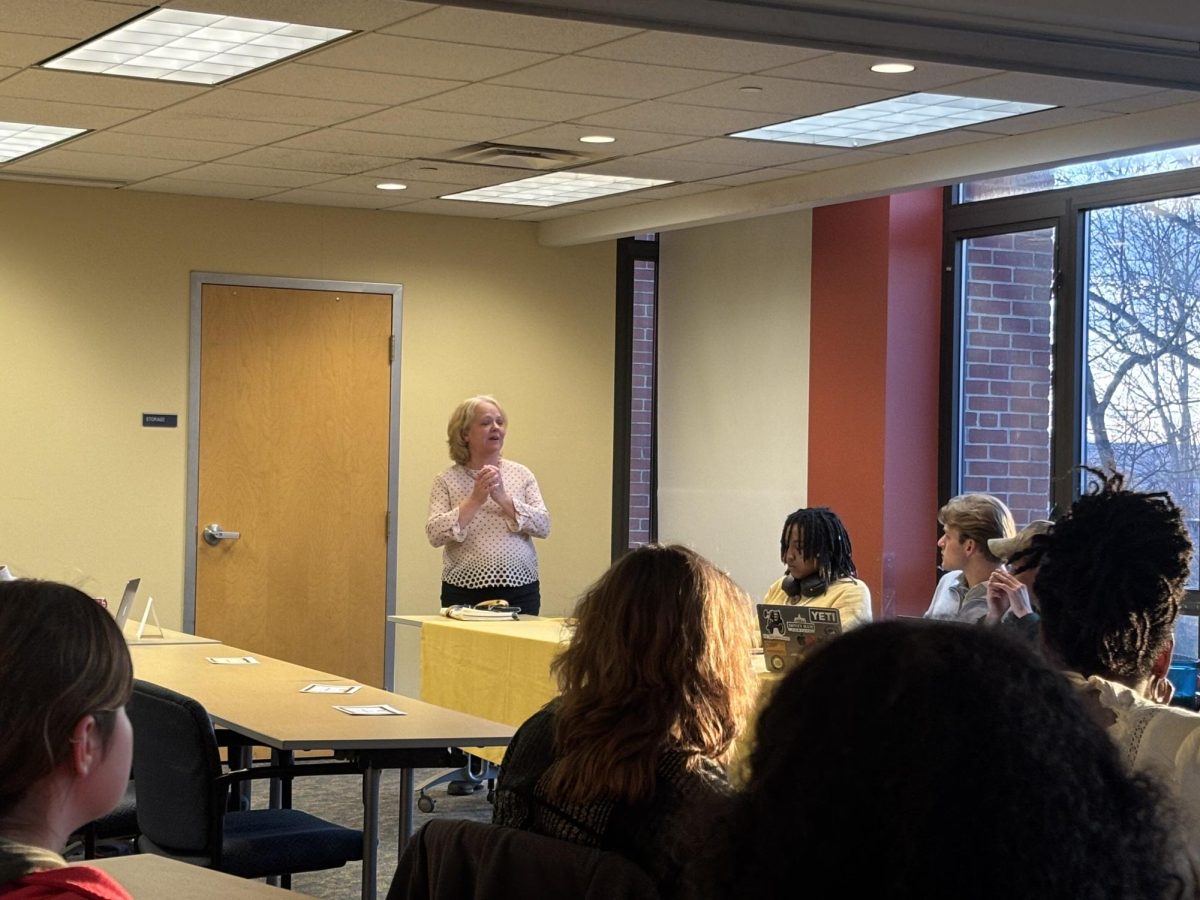President James Mullen and Executive Vice President and Treasurer David McInally shared Allegheny’s sustainability progress and future plan at the annual Council of Independent Colleges Presidents’ Institute over winter break.
The conference invites the presidents of over 600 liberal arts colleges and universities involved in the CIC to listen to discussions on how to make the liberal arts college experience better. The CIC aims to promote leadership, excellence and contributions to society, according to its website.
For the second year in a row, Allegheny was chosen to speak on a panel.
“[The conference is] an opportunity for Allegheny to present in a leadership manner to these presidents and enhance our national visibility,” said Mullen.
Instead of sitting at their desks in freezing Meadville this year, Mullen and McInally traveled to Palm Springs, Calif., from Jan. 4 through 7 in order to speak on a panel for “Driving Down Energy Costs with Environmentally Conscious Approaches.”
Former president Richard Cook continues to be involved with the CIC and actually suggested Allegheny’s involvement in this panel.
Cook, president from 1996 to 2008, first put the green movement in motion on campus when he was one of the first 20 of hundreds of signatures on the American College and University Presidents Climate Commitment in 2007.
He attended this year’s CIC conference and was present in the audience for Allegheny’s discussion.
“It was not only about what Allegheny is doing, but what a small campus can do and how they can go about reducing their own environmental impact,” said Cook, who expressed his pride in the joint presentation between Mullen and McInally.
Allegheny was one of three colleges who were invited to speak on this panel. McInally learned other ideas from fellow panelists and presidents of Unity and Wilson Colleges. The president of Unity College, in Unity, Maine, lives in a carbon-neutral home that relies on renewable energy sources like solar energy and only uses the energy it generates. At Wilson College, in Chambersburg, Pa., they eat food they farm on campus, which lowers transportation costs.
Allegheny has become an example for other colleges to follow in its sustainability initiatives. A number of his colleagues at the presentation praised how far Allegheny has come in advances in sustainability, Cook added.
Mullen recognizes how vital Cook’s initial stand in signing the Climate Commitment was to Allegheny’s green movement.
“[Cook] had a powerful commitment to [the environment] and it’s a commitment I have tried to sustain,” Mullen said. “The mission of environmental sustainability is core to our ethic and core to our school.”
McInally, on the other hand, stressed the importance of future financial road bumps in the world of nonrenewable and renewable resources.
“If we don’t spend money now to reduce our energy use, future generations of Allegheny students will find that utility costs consume more and more of their tuition dollars,” McInally said in an interview.
When the supply of nonrenewable resources begins to run out, McInally said, renewable resources will only become much more expensive.
During the panel, McInally spoke from a financial point of view in planning and committing to an environmental mission based on seven different target areas in which to improve energy efficiency.
“I strongly believe that it is in the best financial interests of the college to reduce energy use,” said McInally. “Prudent financial management and environmental consciousness are not at odds with one another.”
Initially the investments in environmentally-friendly materials will decrease energy costs and eventually they will pay for themselves, usually in the range of one to 10 years, he said.
During the panel, he shared some of Allegheny’s current initiatives, including the expensive transition to 100 percent wind energy over winter break in order to reduce its carbon footprint by about 52 percent.
Because Allegheny is situated in northwestern Pennsylvania and experiences cold winter temperatures, insulation and building envelopes are key components in improving energy efficiency. Last year, approximately 20 percent of Ford Chapel’s annual fuel bill was reduced after the building was properly “winterized,” according to a press release in December. McInally said that Montgomery Hall and off-campus houses will be next on the list.
“Our goals were to continue to make the campus more environmentally-conscious and aware and make our practices more sustainable,” Cook said of his presidential reign.
His goals were still relevant and apparent in Mullen and McInally’s presentation this month.
At Allegheny, lighting is changing to ensure compact fluorescent bulbs are being used everywhere possible. McInally also expressed interest in building automation systems, which would turn heat on automatically when the building was in use. On an automatic note, some newer light fixtures are also motion-sensitive and therefore have already helped reduce energy costs. Because lighting is somewhat inexpensive, it will only take a couple years for them to pay back what they cost.
Regardless, McInally acknowledges the fact that although some materials may be expensive, they are an investment and they will eventually pay for themselves.
But presidents are not the only ones involved in the environmental commitment.
While Allegheny College hopes to manage water usage and food waste by low-flow toilets and natural composting, it also relies on student behaviors and activities such as Recyclemania or building energy challenges, McInally said in his presentation.










